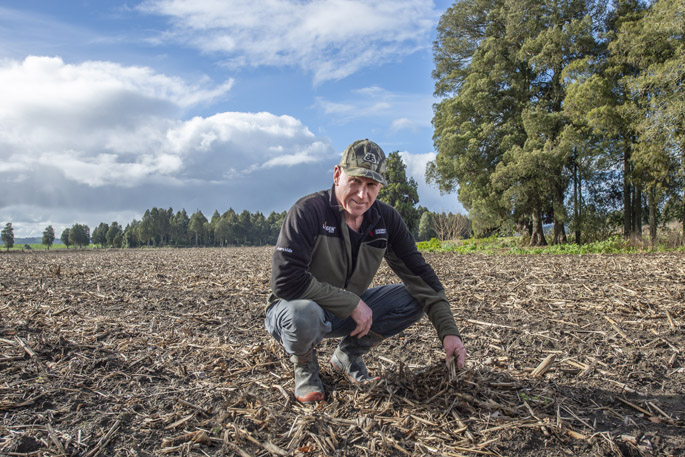When Te Kauwhata maize grower Peter Kelly was nominated by his farm advisor Malcolm Smith for a Federated Farmers Industry Group Arable award, he didn’t think he’d actually win the 2019 Maize Grower of the Year title.
The award recognises his excellent 2019 average maize grain yield rates of 13.2 tonnes per hectare, compared to the Foundation of Agricultural Research’s nationally recorded 2019 average of 10.9 tonnes per hectare.
Peter shrugs the whole thing off with “maize growing relies on a lot of good luck”. However, his 28 years of experience, and his understanding of the somewhat challenging conditions of the land he farms, are a critical part of the process.
Peter, one worker and a casual run a 570-ha block for his cousin, Brian Lloyd. Some of the land is within a stopbank on the edge of the Whangamarino Wetland, in North Waikato.
“We grow maize on 230ha, and the rest is leased or in beef production,” says Peter.
The property consists of Te Kauwhata clay, and silt over clay, and is part of both the Swans Rd and Vrsaljkos Rd pumping schemes, to ensure that close proximity to the wetland and Lake Waikare doesn’t lead to flooding when water levels rise. “Our land management and inputs depend on the August soil testing.”
September fertilising usually includes potash, caserite, urea, and DAP, to feed to nitrogen-starved soils after a maize crop.
Mainly Pioneer seed is sown in October, with a pre-emergent spray. When the crop is knee-high, around the end of November, a post-emergent is applied, as a side dressing of urea is added.
“Combining the tasks reduces the number of passes through the young crop from four to two, minimising disturbance,” says Peter.
Summer work involves frequent walks through the crop looking for signs of cutworm or army worm, or diseases such as Northern Leaf Blight.
Harvesting is carried out by contractors from March to May, and the stubble is mulched back in with an application of lime around June.
“It doesn’t matter how technically right everything is, you are at the complete mercy of the weather,” says Peter.
“The wrong temperature, too much rain or too little rain, when the crop needs the opposite, will dramatically affect the growth and yield.”
As his award recognises, Peter has a deep understanding of maize growing, and managing arable wetland, giving each crop the best possible start before Mother Nature takes it the rest of the way.



0 Comments
Leave a Comment